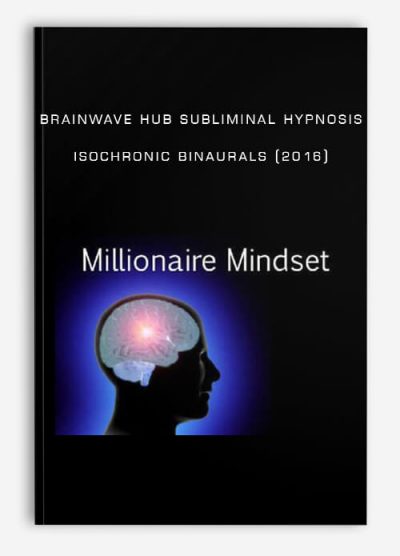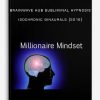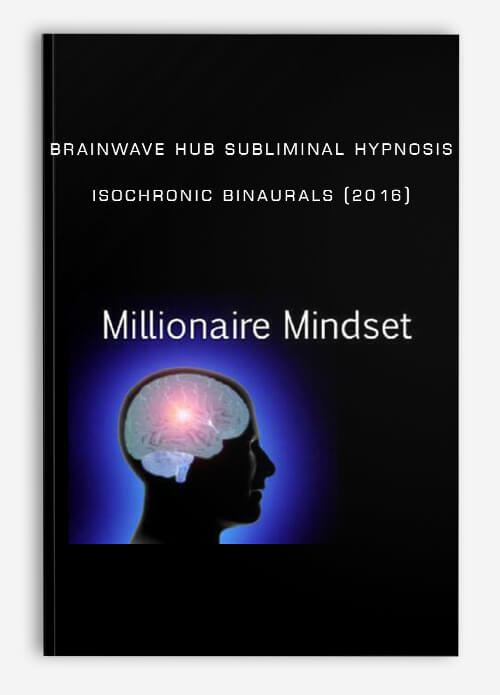Brainwave Hub Subliminal Hypnosis Isochronic Binaurals (2016)
Original price was: $189.00.$37.00Current price is: $37.00.
- Description
Description
Brainwave Hub Subliminal Hypnosis Isochronic Binaurals (2016)
**More information:
Get Brainwave Hub Subliminal Hypnosis Isochronic Binaurals (2016) at bestoftrader.com
Description
Hypnosis is a state of human consciousness involving focused attention and reduced peripheral awareness and an enhanced capacity for response to suggestion. The term may also refer to an art, skill, or act of inducing hypnosis.
The ability to be hypnotized has been described as heritable as shown in twin studies.
Theories explaining what occurs during hypnosis fall into two groups. Altered state theories see hypnosis as an altered state of mind or trance, marked by a level of awareness different from the ordinary conscious state. In contrast, Non-state theories see hypnosis as a form of imaginative role-enactment.
During hypnosis, a person is said to have heightened focus and concentration. The person can concentrate intensely on a specific thought or memory, while blocking out sources of distraction. Hypnotised subjects are said to show an increased response to suggestions. Hypnosis is usually induced by a procedure known as a hypnotic induction involving a series of preliminary instructions and suggestion. The use of hypnotism for therapeutic purposes is referred to as “hypnotherapy”, while its use as a form of entertainment for an audience is known as “stage hypnosis”. Stage hypnosis is often performed by Mentalists practicing the art form of Mentalism.
Subliminal hypnosis
Hypnosis may be done either audibly or with the help of inaudible subliminal messages below the threshold of conscious hearing, often embedded in music files.
Binaural Beats
A binaural beat is an auditory illusion perceived when two different pure-tone sine waves, both with frequencies lower than 1500 Hz, with less than a 40 Hz difference between them, are presented to a listener dichotically, that is one through each ear. For example, if a 530 Hz pure tone is presented to a subject’s right ear, while a 520 Hz pure tone is presented to the subject’s left ear, the listener will perceive the auditory illusion of a third tone, in addition to the two pure-tones presented to each ear. The third sound is called a binaural beat, and in this example would have a perceived pitch correlating to a frequency of 10 Hz, that being the difference between the 530 Hz and 520 Hz pure tones presented to each ear.
Isochronic Tones
Isochronic tones are regular beats of a single tone that are used alongside monaural beats and binaural beats in the process called brainwave entrainment. At its simplest level, an isochronic tone is a tone that is being turned on and off rapidly. They create sharp, distinctive pulses of sound.
Duration of effects
Brainwave entrainment does not have a long-term effect on the patterns of neural impulses. That is, very soon after the external stimulus stops, the brainwaves return to their normal state.
Studies
In 2008, clinical neurologist Steven Novella published an article on brainwave entrainment, claiming ‘A number of companies and individuals have then extrapolated from the phenomenon of entrainment to claim that altering the brain waves changes the actual functioning of the brain. There is no theoretical or empirical basis for this.’ However, Novella is a renowned skeptic who founded The Skeptics’ Guide to the Universe in 2005, along with numerous other professional ventures to promote scientific skepticism.
In direct contradiction to Novella’s claim, more than twenty-one independent peer-reviewed, placebo-controlled studies have been conducted between 1979 and 2012 which show a range of cognitive-behavioral benefits achieved through the practice of temporarily altering brain waves, including: cognitive enhancement after 6 weeks of gamma wave stimulation; improvement in academic achievement after beta brain wave stimulation; increase in alpha wave strength measured by EEG during meditation; substantial reduction in anxiety and corresponding increase in relaxation after theta wave stimulation; and reduction of headache pain, reduction of anxiety, and improved sleep after delta wave stimulation. These temporary benefits may be sustained over the long term by incorporating routine practice of audio-visual entrainment technologies and mindfulness meditation.
Audio-visual entrainment (AVE) refers to the use of flashes of lights and pulses of tones to purposefully guide the brain into various states of brain wave activity. By stimulating the brain with flashing LED lights built into special eye glasses and pulsing auditory tones (isochronic tones) transmitted through headphones within a frequency range of about 0.5 to 25 Hertz, it is possible to shift the frequency of the dominant brain waves either higher or lower and thereby change brain function. A 2001 study by Le Scouarnec RP, et al., found ‘monaural beats can produce brainwave entrainment inasmuch as they are in beat form before striking the ear drum, which impacts the thalamus, and therefore the cortex. EEG studies of monaural beats have conclusively shown that monaural beats produce a frequency following response in the contralateral hemisphere of the brain, and are therefore quite useful for entrainment.
Hypnosis coures
Hypnosis is a human condition involving focused attention, reduced peripheral awareness, and an enhanced capacity to respond to suggestiom.
There are competing theories explaining hypnosis and related phenomena.
Altered state theories see hypnosis as an altered state of mind or trance, marked by a level of awareness different from the ordinary state of consciousness.
In contrast, nonstate theories see hypnosis as, variously, a type of placebo effect, a redefinition of an interaction with a therapist or form of imaginative role enactment.
During hypnosis, a person is said to have heightened focus and concentration.
Hypnotized subjects are said to show an increased response to suggestions.
Hypnosis usually begins with a hypnotic induction involving a series of preliminary instructions and suggestion.
The use of hypnotism for therapeutic purposes is referred to as “hypnotherapy”, while its use as a form of entertainment for an audience is known as “stage hypnosis”.
Stage hypnosis is often performed by mentalists practicing the art form of mentalism.
















